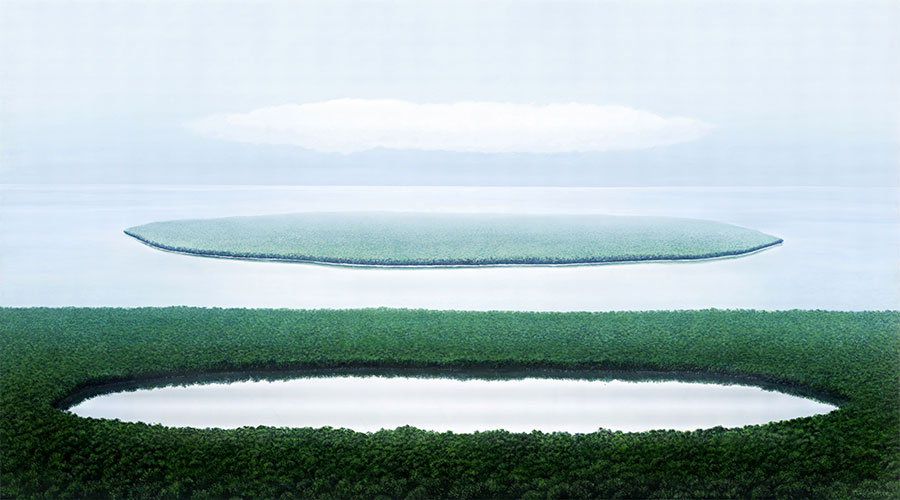Renowned Cuban artists have signed a letter demanding that the works that of their authorship on display in the permanent collection of the National Museum of Fine Arts of Cuba be covered with a cloth. In addition, they ask that other pieces exhibited on the institution’s website be removed.
But why is this happening now?
The document addressed to Jorge Fernández, director of the Museum, was published on May 24 on the social networks of the so-called “27N Movement”, as a gesture of union solidarity with the artist Luis Manuel Otero Alcántara, who remains in hospital, after a hunger and thirst strike that he was carrying out in his home was interrupted by the Cuban authorities.
The signatories, whose list continues to grow, are led by the artist and activist Tania Bruguera and other recognized names within the national plastic arts such as Tomás Sánchez, Marco Castillo, Consuelo Castañeda, Sandra Ramos, Ibrahim Miranda, Carlos A. García de la Nuez , Sandra Ceballos, Carlos Garaicoa and Cirenaica Moreira. Likewise, other well-known artists sign such as Jorge Luis Marrero, Celia González, Yunior Aguiar, Reynier Leyva Novo, Douglas Argüelles, Jorge Wellesley, César Leal, Fernando Rodríguez, Juan Pablo Ballester, Javier Castro, Alberto Jorge Carol and Gustavo Acosta.
Planted in Article 4, subsection c of Law No. 14/1977, Copyright Law, the signatories insist on maintaining their claims “until the demands are met and the state of vulnerability of the artist Luis Manuel Otero Alcántara is protected”, as published on Tania Bruguera’s official Facebook account. Alcántara demaded in the recent past the general rights of freedom of expression and creation for Cuban artists of all ideologies, also demanded during his strike that his works be amended, after being confiscated by the authorities.
The National Museum of Fine Arts responded on the night of May 27, three days after the letter was launched, that it does not intend to comply with the demand: “The Museum regularly acquires works by Cuban artists of all generations and trends, with funds from the state budget. It has not taken into account any extra-artistic considerations to form a heritage collection of the highest value, destined to the enrichment of the spiritual life of the population. What has definitely mattered is respect for the worth of works, attachment to historical contexts, and understanding of the freedoms associated with the nature of art. Such a way of acting is part of an inclusive and transparent cultural policy, which gives the highest priority to public access to the best achievements of Cuban and universal culture ”.
And the text concluded: “The Museum acquired the works of these creators and gives them a legitimate and profitable use for the public. In doing so, a new relationship is established between the pre-existing heritage legacy and the artistic practices of today. This nexus, invigorating in both temporal senses – past and present – is typical of heritage construction. No situation outside the museum field can pretend to violate this museological procedure. In this sense, the Museum does not accept a demand that does not agree with the vocation of service of our institution or with the interest of the public to whom it is due. “
Social networks continue to reflect the different points of view on the subject and the issue of freedom of creation and expression in Cuban art has become much more polarized. Tomás Sánchez, one of the most international Cuban artists, with the greatest presence in the market and whose work Relationship is one of the most popular and captivating within the Museum, made it clear in his networks that: “Cuban art is living unfortunate hours, reduce to The artists to the mere decorative question is to return them in time, we are not a motif on a wall, we are each one of us a complex system of action and thought. The criminalization of difference is not – nor will it be – a path to coexistence. The works of my authorship that the Museum owns belong to the Cuban people, but that concept of Cuba transcends the ideological or the political. Cuba is exquisite and diverse, Cuban art is exquisite and diverse and that, which should fill us with pride, is today a cause for mourning ”.
Likewise, another of the signatories of the letter, Sandra Ramos, said in a Facebook post: “The solidarity with Luis Manuel Otero Alcántara and the outrage against the institutional and state abuse towards any Cuban (…) The need for a commitment to the art as an engine of ideas, a promoter of changes and a creator of new alternatives and modes of social inclusion ”.
However, other experts do not see the matter in the same way. The important curator and critic of Cuban art David Mateo made public his opinion on the ineffectiveness of using the work of art of patrimonial value as an “exchange resource or strategy of ideological pressure” while insisting on the need for the National Council of the Plastic Arts make public a statement in this regard. Act that has already been made to wait. “There is a lot of uncertainty, a lot of accumulated tension already on the issue of rights, artistic prerogatives. We have regressed in various areas of controversy and dissent in which we had advanced. The case of Luis Manuel Otero is perhaps the most visible event of such a rebound ”, points out the expert in his networks.
The National Council of Plastic Arts has not referred to the issue at the time of concluding this note.
The request is an unprecedented fact in the last sixty years of artistic institutionality in Cuba.
Artwork demanded to be retired:
Marco Castillo. “Rubber dumped in Vancouver” (1991)
Consuelo Castañeda. “Lichtenstein and the Greeks” (1985)
Tania Bruguera “Statistics” (1996)
Tomás Sánchez “Relacion”

